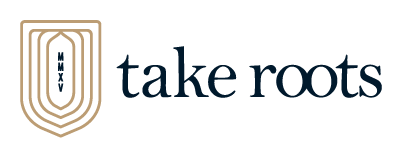This is part one of a two-part blog series on communications planning. Stay tuned for part two: going digital!
In order to be successful and stay focused, every organization needs to define its business goals and have an overarching strategy that outlines how to achieve them. It’s just as important to define your communications goals. If your organization wants to increase membership, increase charitable donations or raise awareness, you need communications strategies to achieve this. Today we’ll talk about the elements that go into a communications strategy and how you can map them out to achieve your goals!
Goals: Think big.
Let’s talk about goals. What’s the big, overarching thing your organization wants to achieve this year? The important thing here is to keep it general and relate the communications goal to your organization’s business goals.
Here are some examples of goals:
- Host a successful fundraising gala.
- Raise awareness of programs and services.
- Increase number of charitable donations.
Objectives: Steps to get there
Here’s the part where we get more specific. What specific steps would you need to take to achieve the above goal? Where goals are broad and general, objectives are more concrete and specific. They will often include target numbers to aim for – just remember to set yourself up for success by making your objectives realistic and achievable!
Here are some examples of communications objectives:
- Increase gala attendance by 20 per cent from 2018.
- Increase social media engagement by 25 per cent.
- Total donation amounts will increase by 10 per cent from 2018.
Audiences: Who you’re talking to
Your campaigns will be more successful if you focus your efforts on your main audiences. Think about who your target demographics are and separate them into specific groups.
Audience examples include:
- Parents with children aged 2-10
- Elementary school teachers in Northern Alberta
- Childcare workers in the Edmonton area
Key Messages: What you want to say
Key messages get to the heart of what you want your audiences to know about your organization or campaign. What are the most important 2-3 things you need to communicate to the people who matter? If you keep your messages short, to the point and easy to remember, you can include them in all written campaign materials to ensure your message is focused.
Example of key messages include:
- This year’s fundraising gala will help us continue to make a difference in our community.
- Help us achieve our goal to end poverty in Edmonton.
Tactics: The nitty gritty
This is the fun part. What are the day-to-day things your organization can do to achieve your objectives and goals? Consider the resources and tools that are available and how you can use them.
Examples of tactics include:
- Launch a social media contest to raise awareness, increase followers and engagement
- Create a dedicated campaign webpage with a donation function
- Create a newsletter campaign
- Pitch to local media via news release, media release or photo opportunity
- Host a media launch event
Evaluation: See how you did
The best way to know if your initiative was successful is to measure its impact. There are many low-cost or free tools that help communicators measure their campaign reach. Before you launch your campaign, know which tools are available to you and how to use them to evaluate how you did!
Here are some ways you can evaluate your campaigns:
- Measure social media engagement and reach using each platform’s built-in analytics tool
- Compare event attendance to previous events
- Compare donation amounts from previous campaigns
- Analyze newsletter open rates and clickthrough rates
- Analyze web traffic on specific campaign days
We can help you build your communications plan – it’s what we do. Get in touch with us today!
You might also like:
Your brand is more than your logo
Data-driven storytelling
